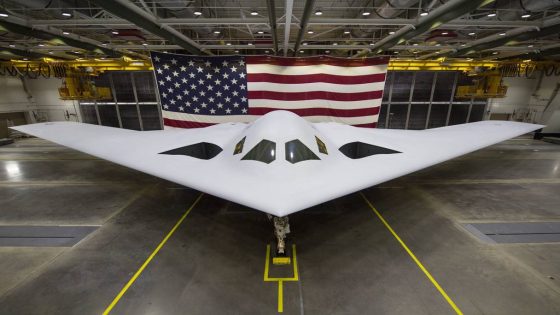The Air Force is seeing the unit cost of the B-21 Raider, its next stealth bomber, come down after negotiations with manufacturer Northrop Grumman, the serviceâs secretary said Tuesday.
Frank Kendall told the Senate Appropriations subcommittee on defense the cost decline shows the negotiations are âgoing in the right direction.â
He declined to discuss upcoming milestones for the B-21 in the hearing on the departmentâs proposed fiscal 2025 budget, citing the secretive programâs high levels of classification.
When the first B-21 was unveiled to the public in December 2022, the Air Force said it was staying under its inflation-adjusted average procurement unit cost of $692 million. An Air Force spokesperson on Tuesday declined to say what the bomberâs unit costs are now, citing its classification.
The spokesperson said the Air Forceâs procurement budget for the B-21 in fiscal 2025 was adjusted to take into account the favorable negotiations on low-rate initial production prices. The service said neither the programâs quantities nor scope were adjusted.
Northrop Grumman did not immediately respond to a request for comment on Kendallâs remarks. The company reported a nearly $1.6 billion charge on the B-21 in the last quarter of 2023, citing rising production costs and macroeconomic disruptions. This came after chief executive Kathy Warden warned investors several times last year Northrop Grumman could lose money at first on the program.
As the B-21â²s development continues and moves into low-rate initial production, the Air Force is trying to make sure it plans for all aspects of the program, Kendall said, not just getting the aircraft itself ready. That includes building the facilities needed to operate and maintain it, training the pilots and other airmen who will work on it and setting up simulators.
âIâve seen programs get into trouble because there was too much focus on the platform and not enough on all the things that are necessary to support it,â Kendall said. âHopefully, we will have avoided that in the case of the B-21.â
Meanwhile, the recapitalization of another key portion of the United Statesâ nuclear triad, the LGM-35A Sentinel intercontinental ballistic missile, is not seeing the same cost decline. The expected price tag of the Sentinel program has grown at least 37%, largely due to the massively complex construction projects it will require. It is now expected to cost more than $130 billion.
The Sentinel cost growth has triggered a process known as a critical Nunn-McCurdy breach, and the Defense Department is now reviewing the program to find a way to restructure it and bring its price under control. Air Force Chief of Staff Gen. Dave Allvin said Tuesday the Pentagonâs decision on the Sentinel review will likely come in July.
A Nunn-McCurdy review process can also lead to a program being canceled, but top Air Force officials have repeatedly said the Sentinel â slated to replace the aging, Cold War-era LGM-30G Minuteman III ICBM â is too important to cancel.
Allvin said the service remains committed to recapitalizing its ICBM program. Land-based nuclear missiles allow a quicker response than the militaryâs nuclear bombers and submarines and have âa great deterrence effect,â he said.
âWeâre supporting [the review process] with facts and data,â Allvin said. âRegardless of what the outcome of that committee [is], we will ensure we have a safe and reliable and effective [nuclear] triad in the future.â
The Air Force has taken steps to improve the structure of the Sentinel program, including by putting a two-star general in charge as program executive officer for ICBMs, Allvin said.
And other parts of the Air Forceâs modernization efforts â namely its plans for next-generation tankers and transport planes â are likely to take a back seat to its efforts to recapitalize its nuclear bombers and ICBMs, another top official said Tuesday.
If nuclear modernization gets delayed, said Lt. Gen. Richard Moore, deputy chief of staff for plans and programs, that could have ripple effects â potentially including major service life extensions of older mobility aircraft.
âI donât view it as realistic to see a next-gen tanker or a next-gen airlifter ⦠until after the nuclear bow wave,â Moore said at an Air and Space Forces Association discussion. âAnd if that nuclear bow wave pushes out, I think thereâs a possibility â just from a reality perspective â that it will push recapitalization of the remainder of the mobility fleet out.â
Stephen Losey is the air warfare reporter for Defense News. He previously covered leadership and personnel issues at Air Force Times, and the Pentagon, special operations and air warfare at Military.com. He has traveled to the Middle East to cover U.S. Air Force operations.
Source Agencies




